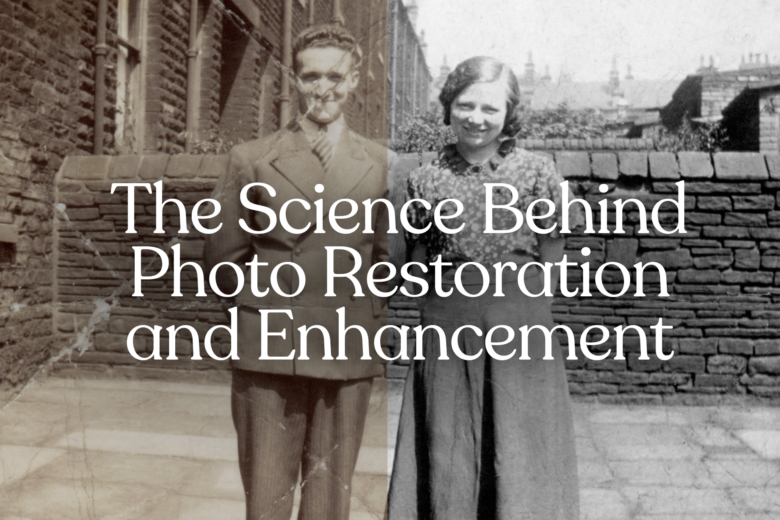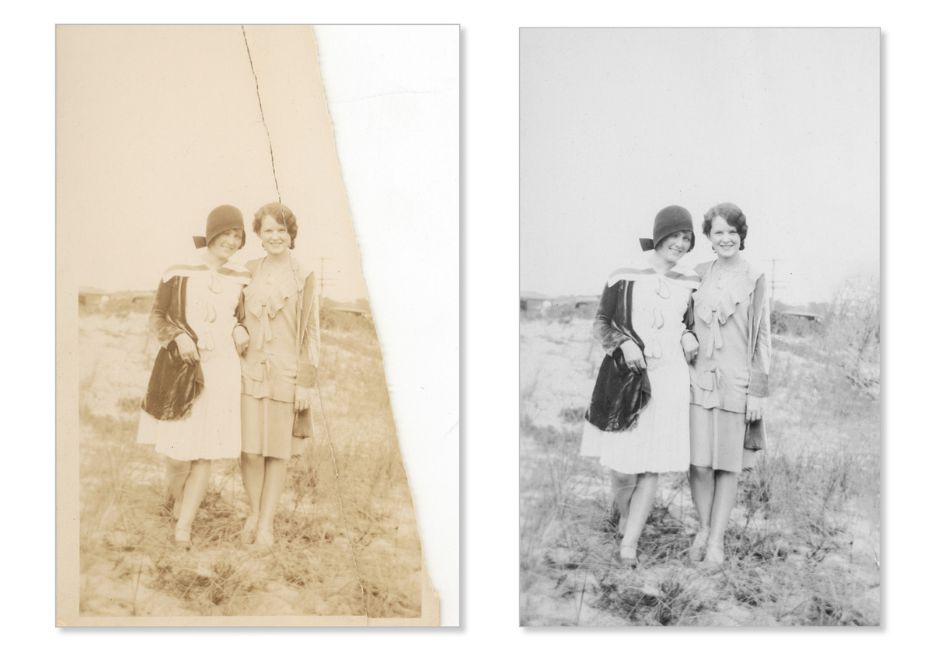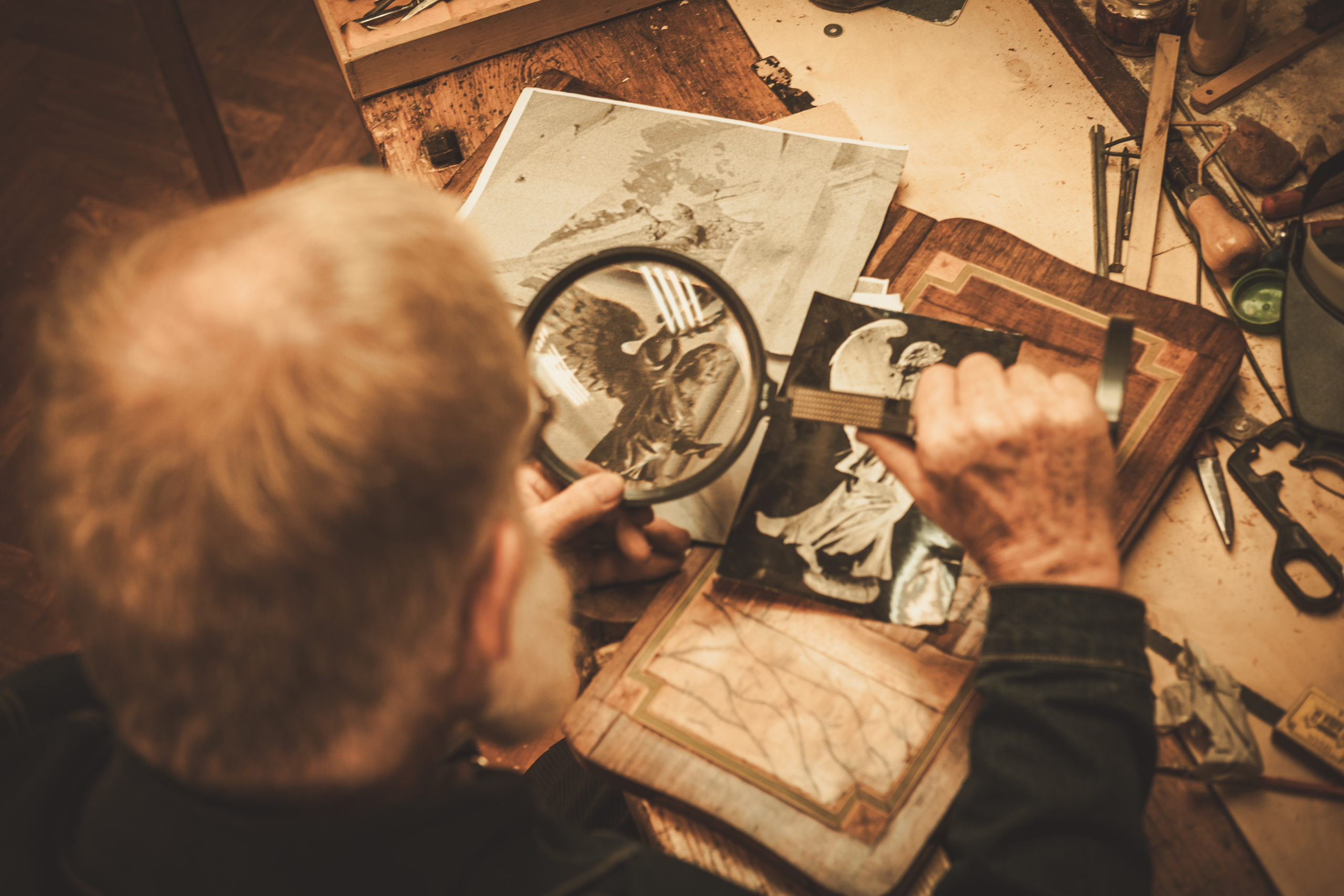Photo restoration is about bringing old memories back to life and making sure they’re protected for years to come — whether in the form of a faded family portrait or a sentimental snapshot that’s been scratched or folded. When restoring old photos, you can repair damage and enhance the quality to be brand new again.
In this article, we explore old photo restoration: how it works, what’s involved, and the options available. Plus, we explain why digitizing your photos is the best way to protect and improve them.
WHAT IS PHOTO RESTORATION?
Photo restoration involves digitally repairing any imperfections in a photo to restore the picture as close to its original state as possible.
This process often includes removing scratches, fixing tears, and correcting color balance — sometimes even restoring missing parts of the photo. Nowadays, with software like Adobe Photoshop widely available, anyone can try their hand at photo restoration.
However, it does require a finely honed skill, which is why many people opt to use professional photo restoration services.
HOW DOES PHOTO RESTORATION WORK?
Photo restoration involves digitizing the original photograph by scanning it at a high resolution. Then, specialized software is used to open the file and address the various issues in the image.
The process usually begins with cleaning up any visible damage, such as scratches, stains, or tears. Next, the focus shifts to color correction and contrast adjustment: over time, photos can lose their original colors or become too dark or light. Sometimes, missing parts of the image also need to be reconstructed, which can involve piecing together clues from undamaged areas or even using reference images to fill in the gaps.
PHOTO RESTORATION TECHNIQUES
There are a range of techniques that professionals use to bring damaged or faded photos back to life.
CORRECTING EXPOSURE AND FADING
Over time, printed photos often fade, losing their sharpness and contrast. Corrections to exposure restore balance, bringing back the details hidden in shadows or overexposed areas. Editors can fine-tune brightness and contrast levels to make the image look more like it did originally.
ENHANCING COLOR
Colors in old photos will shift or fade, giving a once-vibrant picture a washed-out or discolored look. Restorers adjust the color balance and saturation, either by correcting the faded hues or, in some cases, colorizing black-and-white or sepia photos to give them new life. This process involves analyzing the original colors and carefully applying digital adjustments to recreate a natural look.
TREATING CREASES, CRACKS, TEARS, AND OTHER MAJOR DAMAGE
Physical damage like creases, cracks, and tears can severely impact the appearance of a photo. Using tools like the clone stamp or healing brush in Photoshop, these imperfections can be digitally “healed.” This involves copying pixels from undamaged parts of the photo and seamlessly blending them over the damaged areas, ensuring the repaired sections match the surrounding textures and tones.
BLURRING AND CROPPING WHERE NECESSARY
Sometimes, parts of a photo are beyond repair or distract from the main subject. In these cases, subtle blurring can be applied to de-emphasize certain areas or cropping can be used to focus on the most important part of the image. Cropping also allows restorers to remove any irreparable damage around the edges of a photo, giving it a cleaner, more polished look.
THE THREE TYPES OF PHOTO RESTORATION
What do you want to do with your old photos? When it comes to photo restoration, the approach you take depends on your ultimate goal for the image. There are three main types of restoration, each with a different focus:
1. RESTORE THE ORIGINAL
If you’d like to bring your photo back to its original state (or as close as possible), it’s important to repair damage while still preserving the image’s historical authenticity. The restorer will fix issues like fading, scratches, and tears, while still aiming to maintain the photo’s original look and feel. This is ideal for those who want to keep the photo’s vintage charm intact but repair imperfections that have come up over time.
2. ENHANCE THE ORIGINAL TO LOOK NEW
Making old photos look like they were taken yesterday is possible with the magic of restoration. Here, editors will not only repair damage but also improve the image’s overall quality.
Color corrections are more pronounced, contrast and brightness are adjusted to modern standards, and even imperfections in the original photograph, like poor exposure or composition, can be corrected. The result is a photo that looks fresh and vibrant, almost as if it were never aged or damaged.
3. DIGITIZE THE ORIGINAL AND STORE THE PHYSICAL COPY
Sometimes the goal is to preserve the image in its current state but in a more durable format. Digitizing involves scanning the photo and storing the digital file, often enhancing the image slightly to correct any major issues.
The physical copy can then be safely stored or even framed while the digital version is kept for easy access and sharing. This method is great for archiving purposes and ensures that the photo is protected from further physical deterioration.
DIGITIZE AND ENHANCE YOUR PHOTOS TODAY
Digital restoration not only revives your images but also makes them easy to share, print, and enjoy without the worry of further deterioration.
At EverPresent, we specialize in digitizing and enhancing photos, improving the quality of your image for a minimal fee. Don’t let your treasured photos fade away! Digitize and enhance them today to keep your memories as vivid as the day they were captured.






